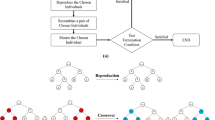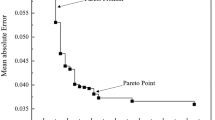Abstract
Against the background of energy shortages and severe air pollution, countries around the world are aware of the importance of energy conservation and emission reduction; China is actively achieving emission reduction targets. In this study, we use a symbolic regression to classify China’s regions according to the degree of influencing factors and calculate and analyze the inherent decoupling relationship between carbon emissions and economic growth in each region. Based on our results, we divided the 30 regions of the country into six categories according to the main influencing factors: GDP (13 regions), energy intensity (EI; 7 regions), industrial structure (IS; 3 regions), urbanization rate (UR; 3 regions), car ownership (CO; 2 regions), and household consumption level (HCL; 2 regions). Then, according to the order of the average carbon emissions in each region from high to low, these regions were further categorized as Type-EI, Type-UR, Type-GDP, Type-IS, Type-CO, or Type-HCL regions. The decoupling coefficient of the Type-UR region was the smallest with an expansive coupling and weak decoupling, whereas the other regions showed expansive negative decoupling, expansive coupling, and weak decoupling. Among them, the reduction rate of the decoupling coefficient in the Type-EI region was the largest at 6.65%. EI and GDP regions were the most notable contributors to emissions, based on which we provide policy recommendations.










Similar content being viewed by others
Data availability
The datasets generated and/or analyzed during the current study are not publicly available due (part of the data comes from research) but are available from the corresponding author on reasonable request.
References
Bartosz S, Jarosław G (2016) Application of selected methods of artificial intelligence to activated sludge settleability predictions. Pol J Environ Stud 25(4):1709–1714
Bellocchi S, Gambini M, Manno M, Stilo T, Vellini M (2018) Positive interactions between electric vehicles and renewable energy sources in CO2-reduced energy scenarios: the Italian case. Energy 161:172–182
Can B, Heavy C (2011) Comparison of experimental designs for simulation-based symbolic regression of manufacturing systems. Comput Ind Eng 61(3):447–462
Dong XY, Hao Y (2018) Would income inequality affect electricity consumption? Evidence from China. Energy 142:215–227
Fan JL, Cao Z, Zhang X, Wang JD, Zhang M (2019) Comparative study on the influence of final use structure on carbon emissions in the Beijing-Tianjin-Hebei region. Sci Total Environ 668:271–282
Freitas LC, Kaneko S (2011) Decomposing the decoupling of CO2 emissions and economic growth in Brazil. Ecol Econ 70:1459–1469
Hao Y, Huang Z, Wu H (2019) Do Carbon Emissions and Economic Growth Decouple in China? An Empirical Analysis Based on Provincial Panel Data[J]. Energies 12:2411
Huang JB, Liu CH, Chen SX, Huang X, Hao Y (2019) The convergence characteristics of China's carbon intensity: evidence from a dynamic spatial panel approach. Sci Total Environ 668:685–695
Huang J, Xiang S, Wang Y, Chen X (2021a) Energy-saving R&D and carbon intensity in China. Energy Econ 98:105240
Huang J, Zhang H, Peng W, Hu C (2021b) Impact of energy technology and structural change on energy demand in China. Sci Total Environ 760:143345
IPCC (2006) Greenhouse gas inventory: IPCC Guidelines for National Greenhouse Gas Inventories. United Kingdom Meteorological Office, Bracknell
Jiang JJ, Ye B, Xie DJ, Tang J (2017) Provincial-level carbon emission drivers and emission reduction strategies in China: combining multi-layer LMDI decomposition with hierarchical clustering. J Clean Prod 169:178–190
Jin YC, Bernhard S (2008) Pareto-based multi objective machine learning: an overview and case studies. IEEE Trans Syst Man Cybern C 38(3):397–415
Khu ST, Liong SY, Babovic V, Madsen H, Muttil N (2001) Genetic programming and its application in real-time runoff forecasting. J Am Water Res Assoc 37(2):439–451
Lee K, Oh W (2006) Analysis of CO2 emissions in APEC countries: a time-series and a cross-sectional decomposition using the log mean Divisia method. Energy Policy 34(17):2779–2787
Li B, Yao R (2009) Urbanisation and its impact on building energy consumption and efficiency in China. Renew Energy 34(9):1994–1998
Li S, Zhou C (2019) What are the impacts of demographic structure on CO2 emissions? A regional analysis in China via heterogeneous panel estimates. Sci Total Environ 650:2021–2031
Lian L, Tian W, Xu HF, Zheng M (2018) Modeling and forecasting passenger car ownership based on symbolic regression. Sustainability. 10:2275
Lin BQ, Benjamin NI (2019) Determinants of industrial carbon dioxide emissions growth in Shanghai: a quantile analysis. J Clean Prod 217:776–786
Liu LC, Wu G, Wang JN (2011) China’s carbon emissions from urban and rural households during 1992-2007. J Clean Prod 19(15):1754–1762
Liu Z, Geng Y, Lindner S (2012) Uncovering China’s greenhouse gas emission from regional and sectoral perspectives. Energy 45(1):1059–1068
Liu L, Wang K, Wang SS, Zhang RQ, Tang XY (2019) Exploring the driving forces and reduction potential of industrial energy-related CO2 emissions during 2001–2030: a case study for Henan Province, China. Sustainability 11(4):1176
Luo H, Li L, Lei YL, Wu SM, Yan D, Fu XS, Luo XM, Wu LK (2021) Decoupling analysis between economic growth and resources environment in Central Plains Urban Agglomeration. Sci Total Environ 752:142284
Mohsin M, Rasheed AK, Sun H, Zhang J, Iram R, Iqbal N, Abbas Q (2019) Developing low carbon economies: an aggregated composite index based on carbon emissions. Sustain Energy Technol Asses 35:365–374
O'Reilly UM (2014) Genetic programming II: automatic discovery of reusable programs. Art&Life 1(4):439–441
Pan XF, Uddin MK, Ai BW, Pan XY, Saima U (2019) Influential factors of carbon emissions intensity in OECD countries: evidence from symbolic regression. J Clean Prod 220:1194–1201
Quan CG, Cheng XJ, Yu SS, Ye X (2020) Analysis on the influencing factors of carbon emission in China’s logistics industry based on LMDI method. Sci Total Environ 734:138473
Schandl H, Hatfield-Dodds S, Wiedmann T, Geschke A, Cai YY, West J, Newth D, Baynes T, Lenzen M, Owen A (2016) Decoupling global environmental pressure and economic growth: scenarios for energy use, materials use and carbon emissions. J Clean Prod 132:45–56
Schmidt M, Lipson H (2009) Distilling free-form natural laws from experimental data. Science 324(5923):81–85
Shahbaz M, Loganathan N, Muzaffar AZ, Ahmed K, Jabran MA (2016) How urbanization affects CO2 emissions in Malaysia? The application of STIRPAT model. Renew Sust Energ Rev 57:83–93
Shen L, Wu Y, Lou Y, Zeng D, Shuai C, Song X (2018) What drives the carbon emission in the Chinese cities? —a case of pilot low carbon city of Beijing. J Clean Prod 174:343–354
Shi Q, Chen J, Shen L (2017) Driving factors of the changes in the carbon emissions in the Chinese construction industry. J Clean Prod 166:615–627
Shuai CY, Chen X, Wu Y, Tan YT, Zhang Y, Shen LY (2018) Identifying the key impact factors of carbon emission in China: results from a largely expanded pool of potential impact factors. J Clean Prod 175:612–623
Song M, Wu J, Song MR, Zhang LY, Zhu YX (2020) Spatiotemporal regularity and spillover effects of carbon emission intensity in China’s Bohai Economic Rim. Sci Total Environ 740:140184
Vladislavleva EJ, Smits GF, Hertog D (2009) Order of nonlinearity as a complexity measure for models generated by symbolic regression via Pareto genetic programming. IEEE Trans Evol Comput 13(2):333–349
Wang Q, Jiang R (2019) Is China’s economic growth decoupled from carbon emissions? J Clean Prod 225:1194–1208
Wang P, Wu WS, Zhu BZ, Wie YM (2013) Examining the impact factors of energy-related CO2 emissions using the STIRPAT model in Guangdong Province, China. Appl Energy 106:65–71
Wang C, Zhang X, Wang F, Lei J, Zhang L (2015) Decomposition of energy-related carbon emissions in Xinjiang and relative mitigation policy recommendations. Front Earth Sci 9(1):65–76
Wang SJ, Wang JY, Li SJ (2019) Socioeconomic driving forces and scenario simulation of CO2 emissions for a fast-developing region in China. J Clean Prod 216:217–229
Wang LO, Wu H, Hao Y (2020) How does China’s land finance affect its carbon emissions? Struct Chang Econ Dyn 54:267–281
Wen L, Ma ZY, Li Y, Li Q (2017) An investigation and forecast on CO2 emission of China: case studies of Beijing and Tianjin. Environ Eng Res 22(4):407–416
Wen L, Li Q, Li Y (2018) Carbon emission and economic growth model of Beijing based on symbolic regression. Pol J Environ Stud 27(1):365–372
Wu CH, Chou HJ, Su WH (2008) Direct transformation of coordinates for GPS positioning using the techniques of genetic programming and symbolic regression. Eng Appl Artif Intell 21(8):1347–1359
Wu Y, Tam VWY, Shuai C, Shen L, Zhang Y, Liao S (2019) Decoupling China’s economic growth from carbon emissions: Empirical studies from 30 Chinese provinces (2001–2015). Sci Total Environ 656:576–588
Wu H, Xu L, Ren S, Hao Y, Yan G (2020) How do energy consumption and environmental regulation affect carbon emissions in China? New evidence from a dynamic threshold panel model. Res Policy 67:101678
Xie PJ, Yang F, Mu ZW, Gao SS (2020) Influencing factors of the decoupling relationship between CO2 emission and economic development in China’s power industry. Energy 209:118341
Yang W, Zhou S (2020) Using decision tree analysis to identify the determinants of residents' CO2 emissions from different types of trips: a case study of Guangzhou, China. J Clean Prod 277:124071
Yang GF, Li XN, Wang JL (2015a) Modeling oil production based on symbolic regression. Energy Policy 82:48–61
Yang G, Sun T, Wang J, Li X (2015b) Modeling the nexus between carbon dioxide emissions and economic growth. Energy Policy 86:104–117
Yang GF, Li WL, Wang JL, Zhang DQ (2016) A comparative study on the influential factors of China’s provincial energy intensity. Energy Policy 88:74–85
Yang L, Yang Y, Zhang X, Tang K (2018) Whether China’s industrial sectors make efforts to reduce CO2 emissions from production? A decomposed decoupling analysis. Energy 160:796–809
Yu YD, Zhou L, Zhou WJ, Ren HT, Kharrazi A, Ma TJ, Zhu B (2017) Decoupling environmental pressure from economic growth on city level: the case study of Chongqing in China. Ecol Indic 75:27–35
Zhang YJ, Da YB (2015) The decomposition of energy-related carbon emission and its decoupling with economic growth in China. Renew Sust Energ Rev 41:1255–1266
Zhang CG, Lin Y (2012) Panel estimation for urbanization, energy consumption and CO2 emissions: a regional analysis in China. Energy Policy 49:488–498
Zhang L, Chen D, Peng S, Pang Q, Li F (2020) Carbon emissions in the transportation sector of Yangtze River Economic Belt: decoupling drivers and inequality. Environ Sci Pollut Res 27(17):21098–21108
Zheng J, Mi Z, Coffman D et al (2019) Regional development and carbon emissions in China. Energy Econ 81:25–36
Tapio P (2005) Towards a theory of decoupling: degrees of decoupling in the EU and the case of road traffic in Finland between 1970 and 2001. Transp Policy 12(2):137–151
Funding
This work was supported by National Natural Science Foundation of China (Grant numbers 20BJY102).
Author information
Authors and Affiliations
Contributions
All authors contributed to the study conception and design. Material preparation, data collection, and analysis were performed by Haiying Liu and Zhiqun Zhang. The first draft of the manuscript was written by Zhiqun Zhang, and all authors commented on previous versions of the manuscript. All authors read and approved the final manuscript.
Corresponding author
Ethics declarations
Ethics approval
Not applicable.
Consent to participate
Not applicable.
Consent for publication
Not applicable.
Competing interests
The authors declare no competing interests.
Additional information
Responsible Editor: Ilhan Ozturk
Publisher’s note
Springer Nature remains neutral with regard to jurisdictional claims in published maps and institutional affiliations.
Rights and permissions
About this article
Cite this article
Liu, ., Zhang, Z. Probing the carbon emissions in 30 regions of China based on symbolic regression and Tapio decoupling. Environ Sci Pollut Res 29, 2650–2663 (2022). https://doi.org/10.1007/s11356-021-15648-x
Received:
Accepted:
Published:
Issue Date:
DOI: https://doi.org/10.1007/s11356-021-15648-x




